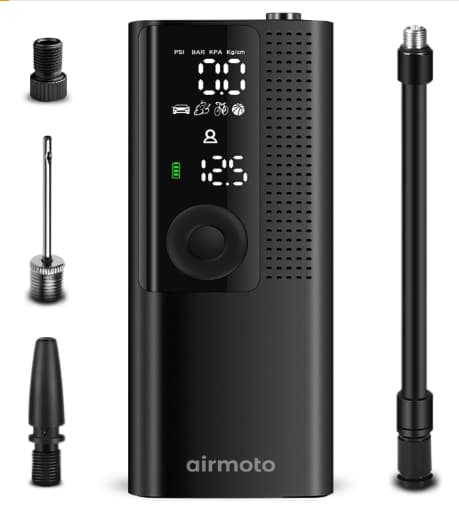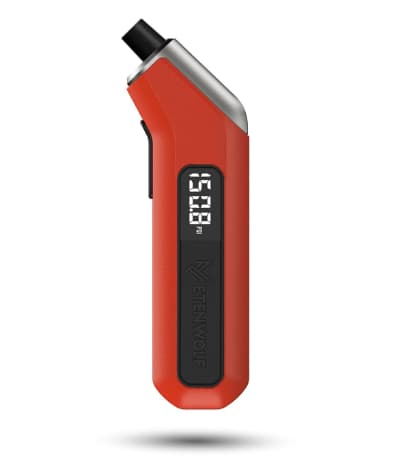Steps to Reset Volvo S60 Tire Pressure Monitoring System
Before you start the reset procedure for the Tire Pressure Monitoring System on your Volvo S60, manually verify that each of the four tires is filled to the advised pressure level, ideally when the tires haven’t been driven on in the past 3 hours.
STEP 1: START ENGINE
To initiate, either start the engine of the Volvo S60 or engage the RUN mode by turning the ignition switch twice without placing your foot on the brake pedal.
STEP 2: SETTINGS
Select the settings menu by pressing the Settings button directly under the information display screen.
STEP 3: SWIPE THE TOUCH SCREEN
Swipe your finger across the information display screen until all the menu options appear.
STEP 4: CAR STATUS
Press CAR STATUS from the menu options
STEP 5: TPMS
Select ‘TPMS’ from the options on the left-hand side of the information display interface.
STEP 6: STORE PRESSURE
Select the STORE PRESSURE option.
STEP 7: CONFIRMATION
An alert will display on the screen that reads “Store Tire Pressure” “Press OK after the tire pressure in all four tires has been checked and adjusted”. Press OK.
Afterwards, a second message will appear that reads “Tire Pressure Monitor” “Storing pressure is in progress and will finalize automatically.” Select OK.
WHAT IS THE VOLVO S60 TPMS?
The acronym TPMS stands for the tire pressure monitoring system of your vehicle. Unlike systems that use individual sensors in each wheel, the Volvo S60 utilizes an indirect tire pressure monitoring approach, leveraging data from the wheel speed sensors to gauge tire pressure.
HOW DOES THE VOLVO S60 TPMS WORK?
Volvo S60’s Tire Pressure Monitoring System (TPMS) doesn’t use conventional direct sensors for tire pressure readings. Instead, it utilizes the vehicle’s Anti-lock Braking System (ABS) sensors, specifically the wheel speed sensors. This type of system falls under the indirect TPMS category. Let’s explore how they function:
WHEEL SPEED SENSORS
Indirect tire pressure systems leverage the wheel speed sensors of the ABS. Each wheel is equipped with a sensor that tracks its rotation speed to assess the Volvo S60’s speed. These sensors are situated right behind each wheel.
COMPARISON OF ROTATING WHEELS
Indirect TPMS operates on the principle that a tire with lower air pressure will have a slightly smaller diameter, resulting in a faster rotation compared to the other three tires. This system analyzes and compares the rotational speeds of all four wheels. It’s worth mentioning that indirect TPMS functions exclusively when the Volvo S60 is in motion because it requires recorded wheel speed data to determine tire air pressure.
CALCULATING THE DIFFERENCES IN AIR PRESSURE
Through the analysis of data from the wheel speed sensors, the Volvo S40 tire pressure system has the capacity to discern situations in which one wheel consistently rotates at a higher rate than the others, signaling a potential decrease in tire air pressure.
ALERTING THE DRIVER OF LOW AIR PRESSURE
Upon identifying a significant difference in wheel rotational speed, implying a potential loss of tire pressure, the TPMS initiates a dashboard warning light to alert the driver. In the event of activation, the Volvo S60 will present a “low tire pressure” warning message in conjunction with the standard low tire pressure alert symbol on the dashboard.
WHAT CAN CAUSE THE TIRE TREAD CIRCUMFERENCE TO CHANGE IN SIZE?
In case a tire’s inflation pressure falls below the recommended level.
When all four tires are not of the same brand, make, or model.
If the four tires do not have identical sizes.
When the tire exhibits tread damage or structural issues.
If one side of the Volvo S60 carries a significantly heavier load than the other.
When there is an uneven distribution of weight between the axles, such as during towing.
In instances where a compact spare wheel has been mounted.
If wheels have been replaced on both axles.
When a tire has been replaced.
If adjustments have been made to tire pressure or if wheels have been rotated or replaced.
In the presence of snow chains on the tires, which can lead to erroneous system warnings due to changes in tire circumference.
WHEN SHOULD YOU RESET & STORE THE VOLVO S60 TIRE PRESSURE SYSTEM?
After modifying the air pressure in a tire.
Post-service or repair on a tire or wheel.
Following tire rotations, wheel alignments or wheel balances.
Once any tire or wheel has been removed from the Volvo S60 and then reattached.
After the installation of the spare tire.
After swapping winter or snow tires.
WHAT DOES RESETTING THE VOLVO S60 TPMS DO?
When configuring new tire pressure values in the Volvo S60, you are essentially creating a new baseline for tire air pressure. Hence, it becomes imperative to correctly set the air pressure to the recommended levels while the tires are cold before adopting these updated pressure settings.
THE CONSEQUENCES OF LOW TIRE PRESSURE
Insufficient tire pressure has the potential to induce tire overheating, which can lead to tread separation and tire blowouts. Tires experiencing significantly low pressure can cause increased flexing (bending) of the tire’s sidewall, ultimately resulting in sudden tire overheating and failure.
WHY IS THE LOW TIRE PRESSURE ALERT ON WHEN THE TIRES ARE FINE?
A prevalent situation that often leads to the tire warning light being illuminated, despite the tires being in proper condition and not low on air, is the presence of different brand and size tires on the Volvo S60. For example, if you have Continental tires on the front of the S60 and Goodyear on the rear. Due to the mechanics of indirect TPMS, even minor differences in tire size or brand can result in the activation of the low tire pressure alert. As a result, it is essential for all four tires to match not only in size but also in brand, make, and model.
HOW DO I KNOW WHICH TIRE IS LOW ON AIR IN MY VOLVO S60?
The information display screen on the Volvo S60 will indicate the specific wheel location on the vehicle that has low air pressure. To ensure the proper functioning of the Volvo S60 TPMS, driving is necessary. Utilize a digital air pressure gauge to verify that the air pressure in each tire aligns with the readings displayed on the information screen.
IS IT SAFE TO DRIVE THE VOLVO S60 WITH THE LOW TIRE PRESSURE WARNING ON?
Driving the Volvo S60 is not recommended when the low tire pressure alert is active. In the event that the low tire pressure light comes on, the best course of action is to pull over and perform a manual inspection of each tire’s air pressure level using a digital tire pressure gauge.
HOW FAR CAN YOU DRIVE THE VOLVO S60 WITH THE LOW TIRE LIGHT ON?
There is no established “safe” period or distance that permits driving the Volvo S60 with the low tire pressure light activated. Our suggestion is to investigate the reason behind the illuminated low tire pressure warning before proceeding with your drive.
VOLVO S60 TIRE SIZE AND AIR PRESSURE
TIRE SIZE | Front Psi/kPa | Rear Psi/kPa |
235/40R19 | 36/248 | 39/268 |
235/45R18 | 36/248 | 39/268 |
245/35R20 | 36/248 | 36/248 |
WILL THE VOLVO S60 TIRE LIGHT COME ON IF THE TIRES ARE OVERINFLATED?
In the Volvo S60, an overinflated tire will be shown on the information display screen but will not cause a low tire alert. When this occurs, it’s recommended to pull over and perform a manual check of the air pressure in each tire. It’s worth considering that driving naturally raises tire temperatures, leading to an increase in air pressure. Therefore, it’s advisable to wait for the tires to cool down, which typically takes around 3 hours after driving, to obtain an accurate measurement of the tire air pressure level.
STEPS TO FINDING A TIRE LEAK
To pinpoint the location of a tire leak on your Volvo S60, adhere to these guidelines:
Inflate the deflating tire to a pressure of around 40 Psi.
Prepare a solution by mixing water and liquid soap in a spray bottle.
Thoroughly spray the soapy mixture across the tire’s surface, ensuring coverage of the bead and valve stem regions.
Pay close attention to the development of bubbles and trace their source to identify the location of the leak.
CAN AN INCREASE IN ALTITUDE TRIGGER THE LOW TIRE PRESSURE LIGHT?
It’s important to note that the tire pressure warning light on your Volvo S60 typically won’t activate solely due to driving at higher altitudes. In reality, as you ascend in elevation, the air pressure within your tires tends to increase. For every 1,000 feet of elevation gain, the tire pressure experiences a rise of approximately 0.5 Psi.
CAN THE VOLVO S60 TPMS BE DISABLED?
The Volvo S60 TPMS cannot be disabled.
USING WINTER TIRES OR A CHANGE OF WHEELS
When utilizing a set of winter tires or when you have a spare set of wheels and tires, it becomes imperative to follow the TPMS reset process to store the new tires into the information display. Any disparities in tire or wheel sizes could lead to the triggering of the low tire alert in the Volvo S60.
CAN COLD WEATHER TRIGGER THE VOLVO S60 TPMS LIGHT?
One frequent cause behind the activation of the low tire pressure warning in the Volvo S60 is the fluctuation in atmospheric temperatures. Typically, tire pressure undergoes an alteration of around 1 Psi (6.8 kPa) for every 10°F temperature shift. For instance, a temperature drop of 48°F within a span of 2 months can lead to a decline in tire pressure from 36 Psi to 31 Psi in the Volvo S60, resulting in the activation of the tire warning indicator. Given the regular occurrence of temperature variations, particularly in specific regions, it’s advisable to perform routine tire pressure checks for your Volvo S60 every few weeks. These checks should be conducted when the tires are cold (before driving for less than a mile) to ensure accurate readings and to preempt any tire-related complications.
THE RELATIONSHIP BETWEEN TIRE PRESSURE AND FUEL EFFICIENCY IN VOLVO S60
Maintaining the appropriate tire pressure in your Volvo S60 is of utmost significance in order to maximize fuel efficiency. When tires are inadequately inflated, they generate heightened rolling resistance, compelling the engine to exert more effort and consequently resulting in increased fuel consumption. A decrease in tire pressure by 1 Psi across all four tires can lead to a decrease in fuel efficiency by around 0.2%. This means that a common underinflation of 5 Psi, which is frequently encountered, could potentially result in a 1% reduction in the Volvo S60’s miles per gallon (MPG).
GUIDELINES FOR USING TIRE PLUGS
With a decade of experience in the field of automotive technology, I frequently rely on tire plugs as a dependable and effective method for repairing tire punctures. When administered correctly, tire plugs are known to be a safe and efficient solution. Nevertheless, it is imperative to steer clear of using tire plugs on tires that display significant tread wear or on a sidewall puncture. In instances where the puncture or leakage is substantial in size, it is advisable to consider a tire patch or in some cases a complete tire replacement.
Everything in this article is applicable to all Volvo S60 models and versions built between 2015-2024 including the Volvo S60 Recharge (plug in hybrid),
Please note that this blog post contains Amazon affiliate links. This means that if you make a purchase through one of these links, we at TPMSRESET.COM may earn a small commission at no extra cost to you. We only recommend products that we personally use and believe in. Thank you for supporting us.






